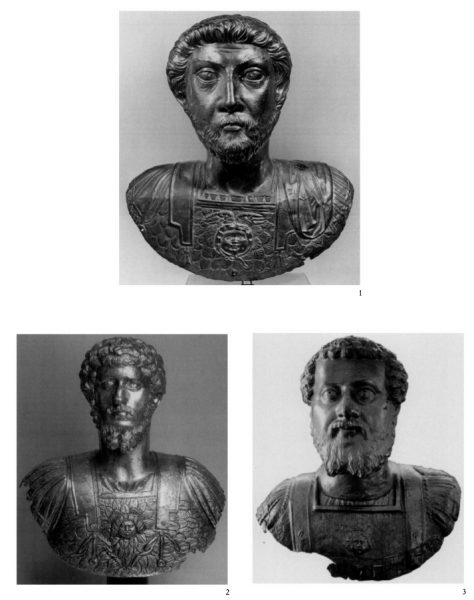Since 1874, only 14 busts of Roman emperors in precious metal (6 in gold, 7 in silver, 1 in gilded silver), ranging from the 1st to the 4th c. and varying greatly in height between 11 and 55 cm and in weight between c.100 and 2850 gm, have become known; in addition, there is a bust of a woman datable to the 3rd c., discovered in the district of Plovdiv.
MARCUS AURELIUS
Aventicum is a former Roman town in modern-day Switzerland. Until the spring of 1940, a few dozen unemployed people from Lausanne were busy excavating there the foundations of the Cigognier shrine. During these excavations on April 19th 1939 in one of the sanctuary’s pipes was found the gold bust of Emperor Marcus Aurelius, which suggests that this portrait of the emperor was used as an image of worship.
Made of a single gold leaf of over 1.5 kg, dating from the 2nd century, is now preserved at the Aventicum Roman Museum.
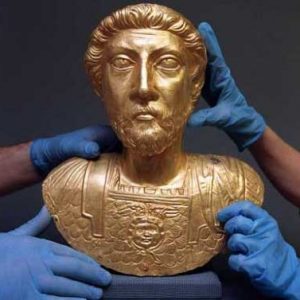
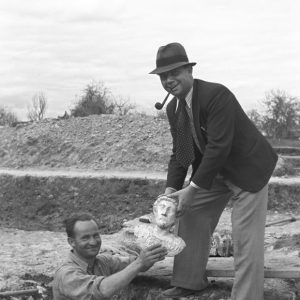

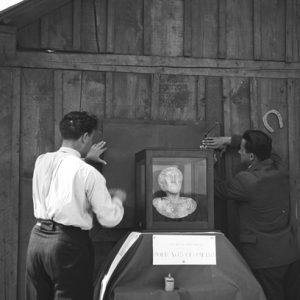

- https://www.aventicum.org/de/expo-2012-1938-1943
- https://www.aventicum.org/de/roemermuseum/fruhere-sonderausstellungen
- https://www.aventicum.org/de/expo-2006-marc-aurel
- https://www.fribourgregion.ch/en/P20919/cigognier-sanctuary
- https://www.delafee.com/Histoire+de+l’or/fr/
LICINIUS I
Bust of the Emperor Licinius, hammered in gold leaf, ca 3rd-4th century.
It was on sale in the Phoenix Ancient Art gallery
https://pl.pinterest.com/pin/484770347362730333/…
https://pl.pinterest.com/pin/752312312749695501/

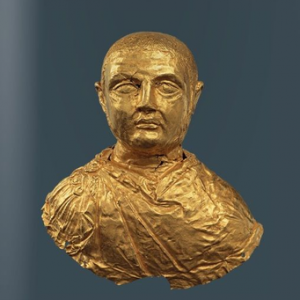



SEPTIMUS SEVERUS
Septimius Severus, Archeological Museum of Komotini, Thrace, Greece
The bust is 28.4 cm high and weighs 980 gm, the approximate equivalent of 3 librae of 327.5 gm, which in turns
corresponds to 135 aurei. The thickness of the metal sheet varies between roughly 1 and 1.4 mm.
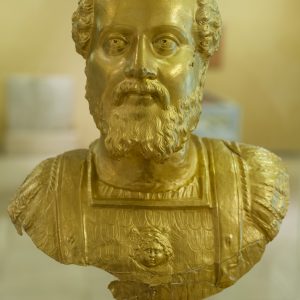
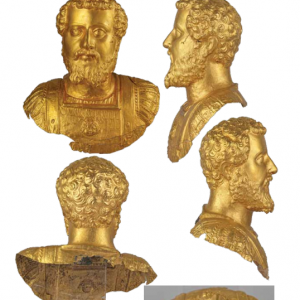

- https://commons.wikimedia.org/wiki/File:20130518_Septimius_Severus_Archeological_Museum_Komotini_Thrace_Greece.jpg
- The gold bust (imago) of Septimius Severus from Didymoteicho
LUCIUS VERUS
Silver bust of Lucius Verus found in 1928 in Marengo in northern Italy and kept in the Museum of Turin. The bust is life-size and conveys the usual type of portraits of Lucius Vera. It is interesting as the first surviving example of Roman monumental sculpture made of precious metals *. The bust is made with great skill from a single thin sheet of silver, without soldering, by pulling and knocking out on a wooden base. The combination of a smooth, shiny face with chased hair curls and a scaly shell is extremely effective. The bust of Lucius Verus of Marengo testifies to the great skill achieved by the Roman torevites.
– —— —— –
* The use of gold and silver for the manufacture of monumental sculptures is reported by Pliny (Nat. Hist., XXXIV). In 1939, during excavations in Aventicum in Switzerland, a bust of Marcus Aurelius was found, made of pure sheet gold, 0.33 m high. It is a provincial repetition of the official type of portraits of this emperor.
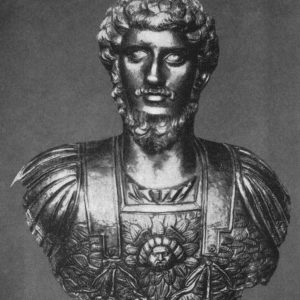

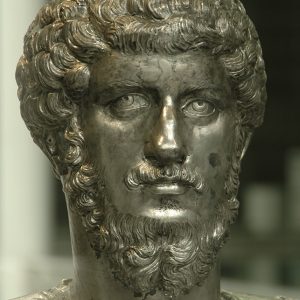
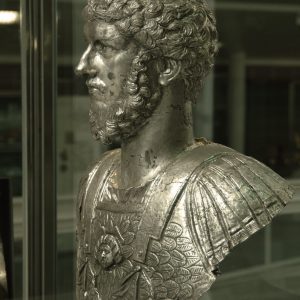

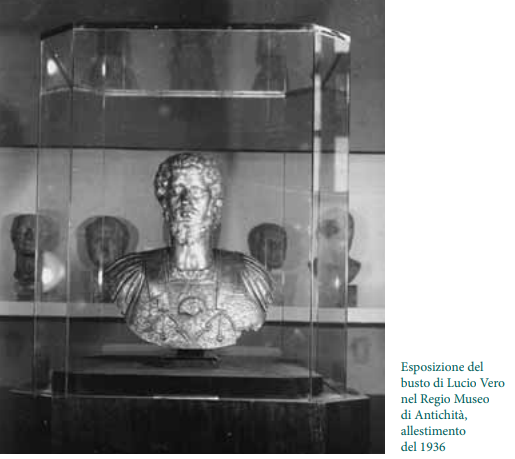
Silver bust of Lucius Verus is a part of the Marengo treasure
catalog >> https://www.museireali.beniculturali.it/wp-content/uploads/2017/11/tesoro-marengo-web.pdf
- 1st © Photo, text: N.N.Britova, N.M. Loseva, N.A.Sidorova. Roman sculptural portrait. M., “Art”, 1975, p. 65, ill. 111.
- http://ancientrome.ru/art/artwork/img.htm?id=643
- http://ancientrome.ru/art/artworken/img.htm?id=2725


